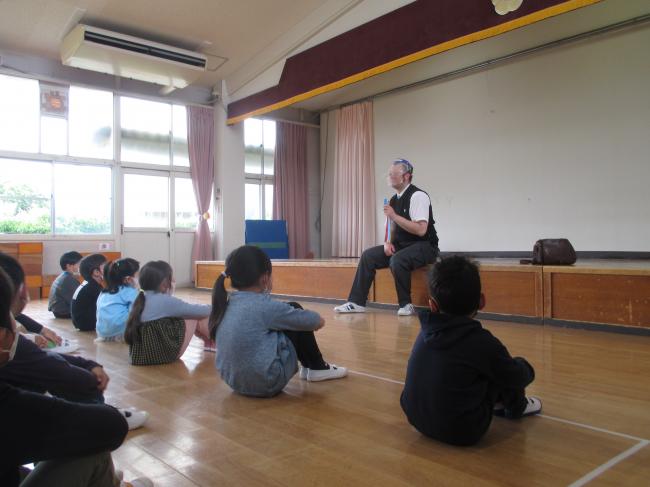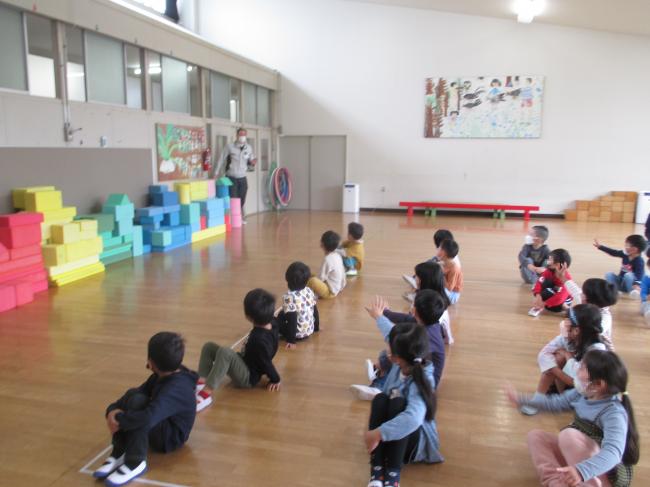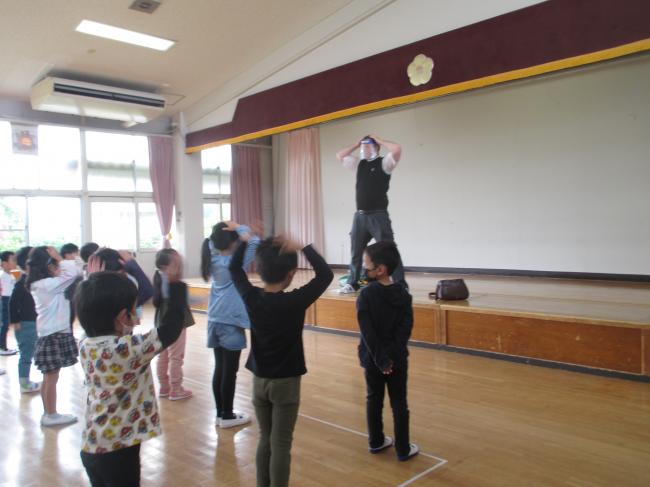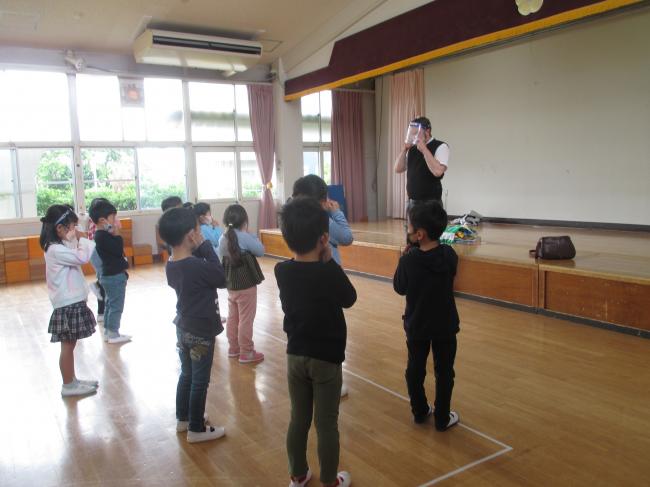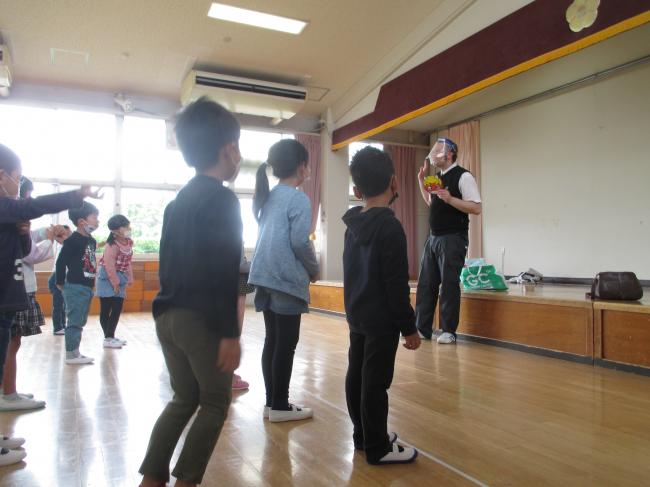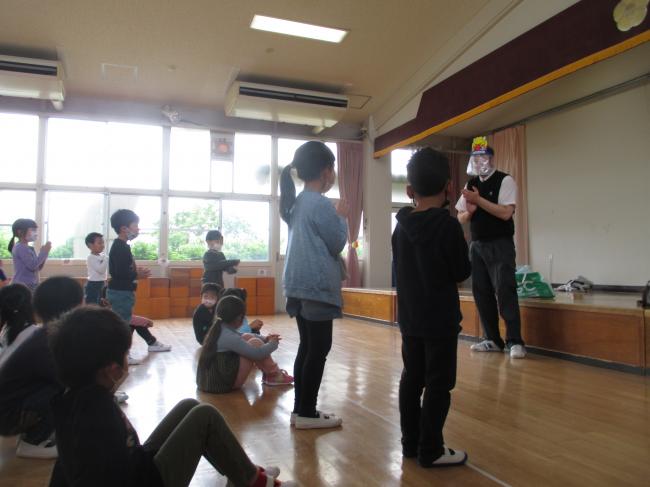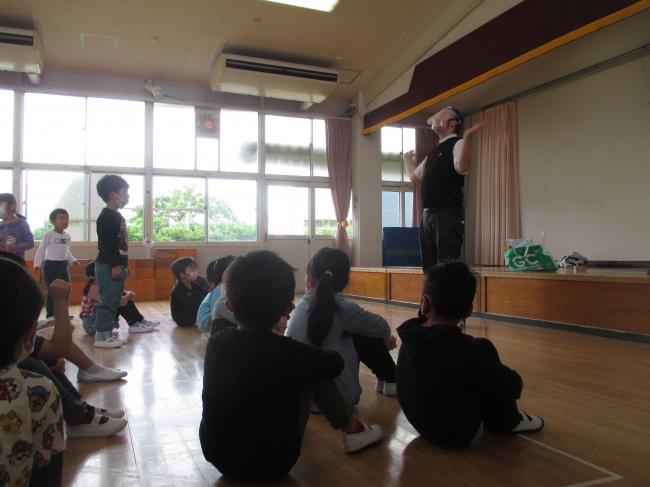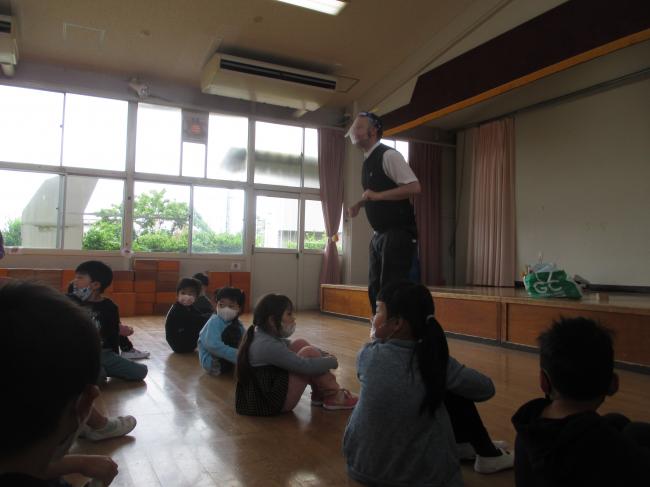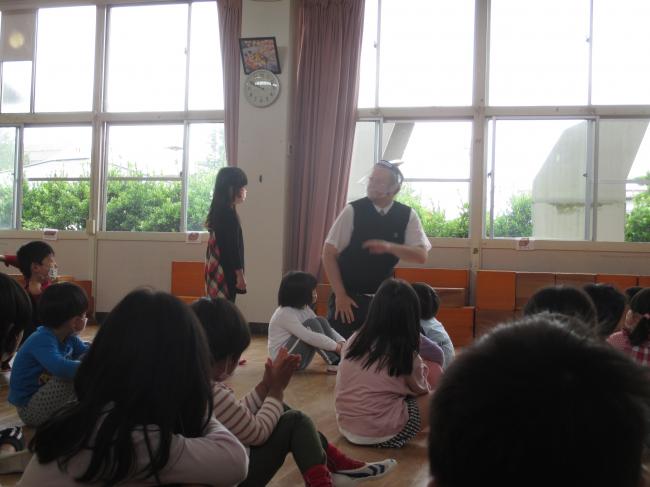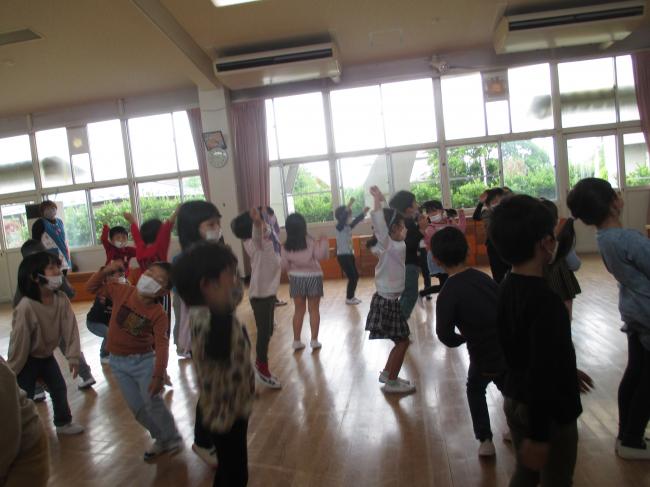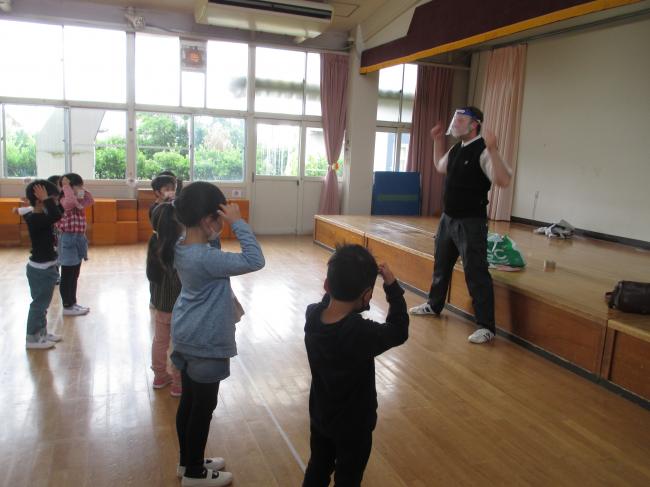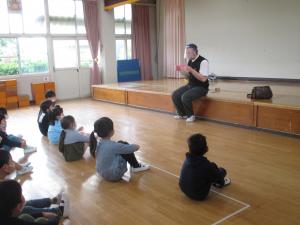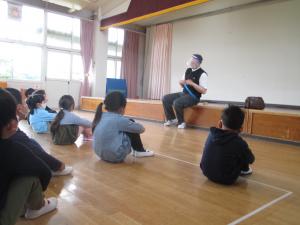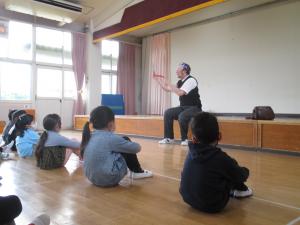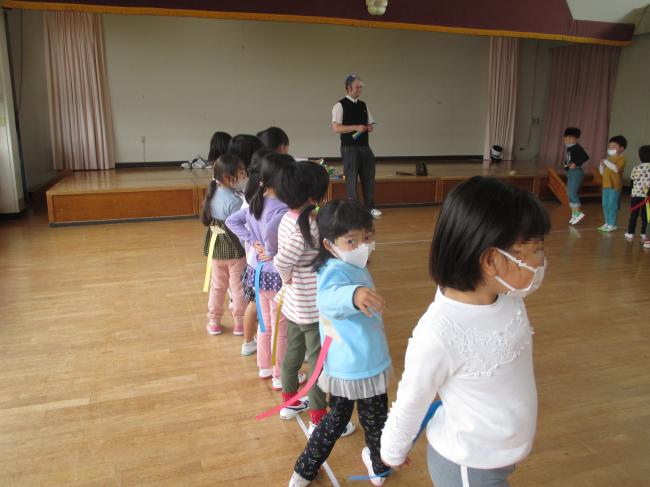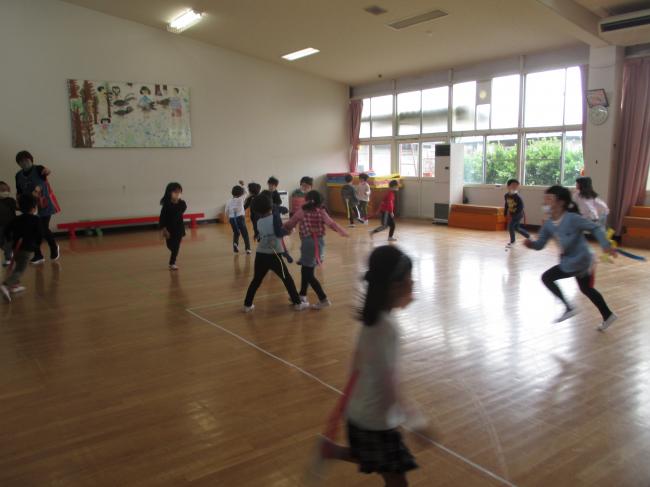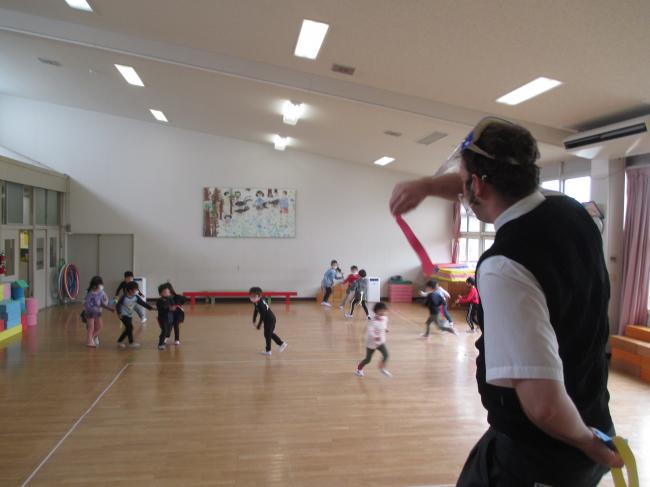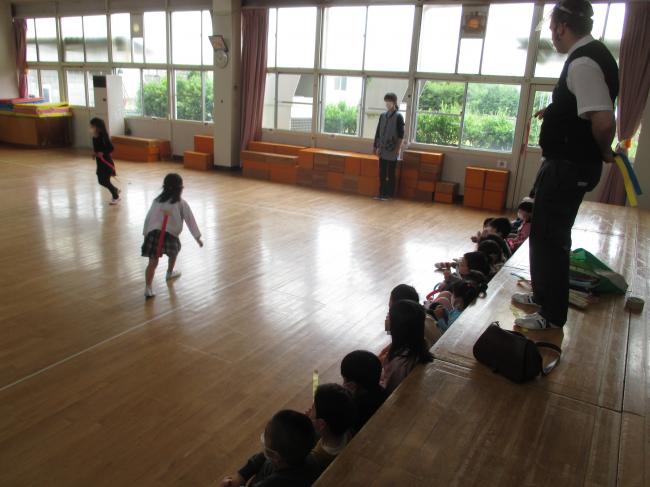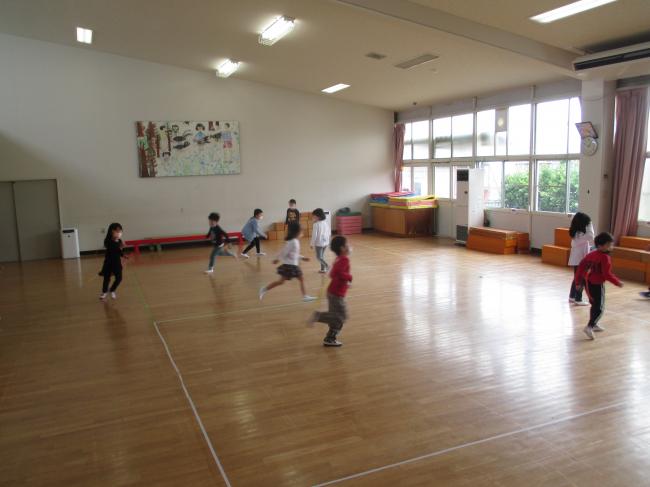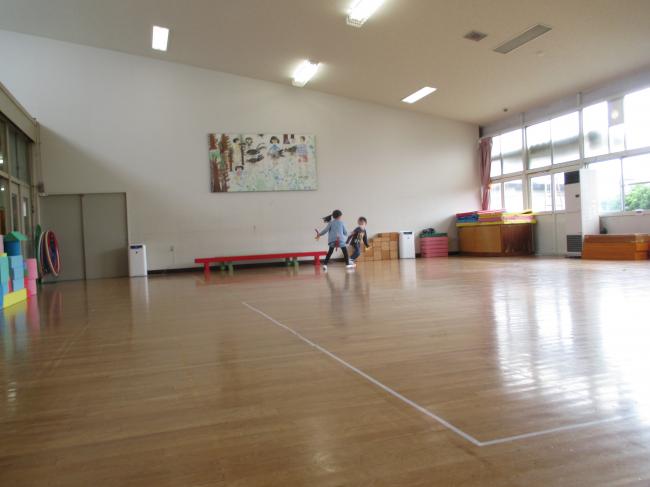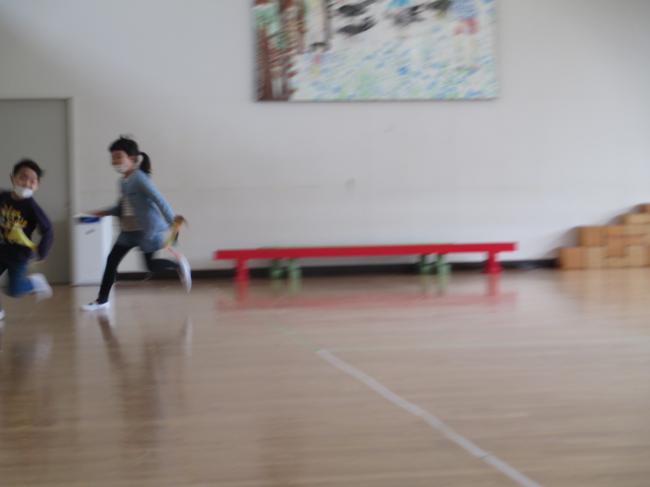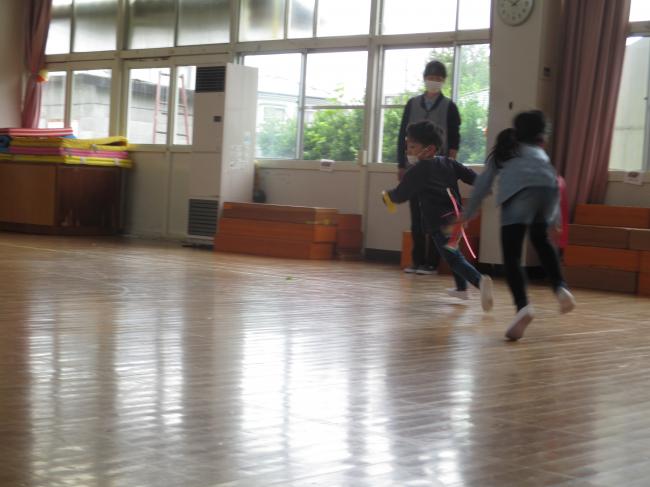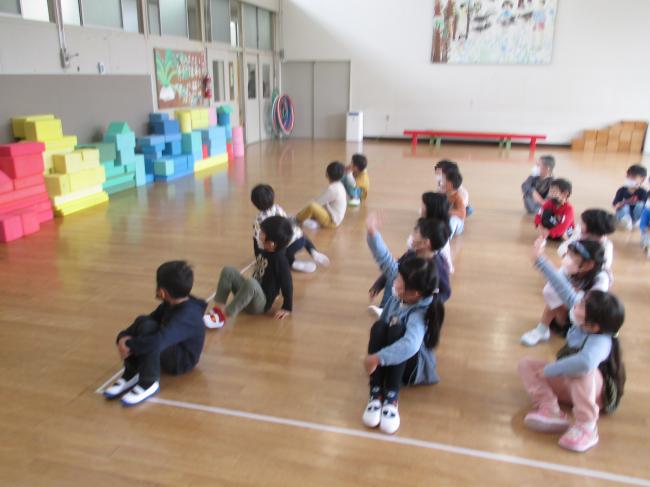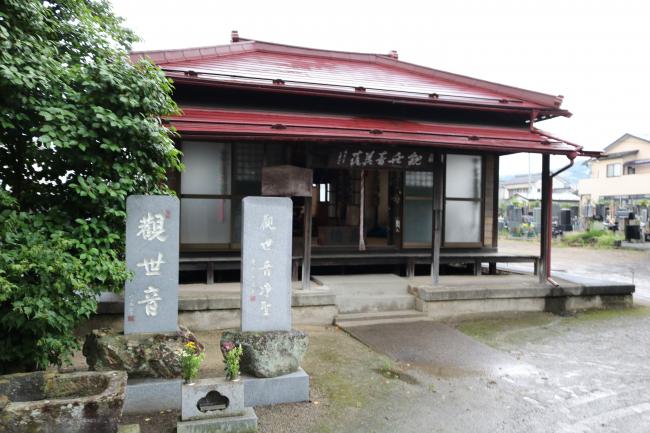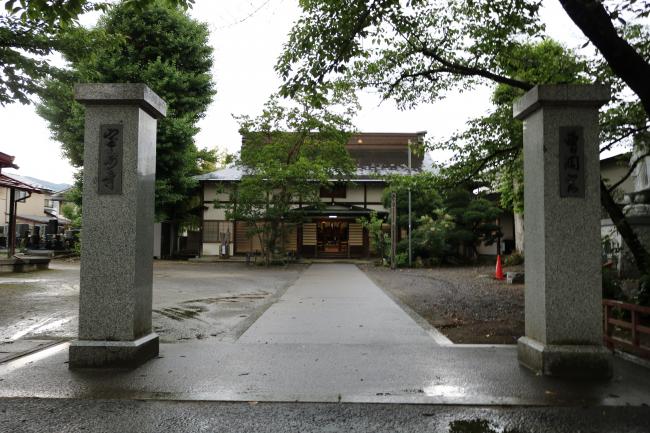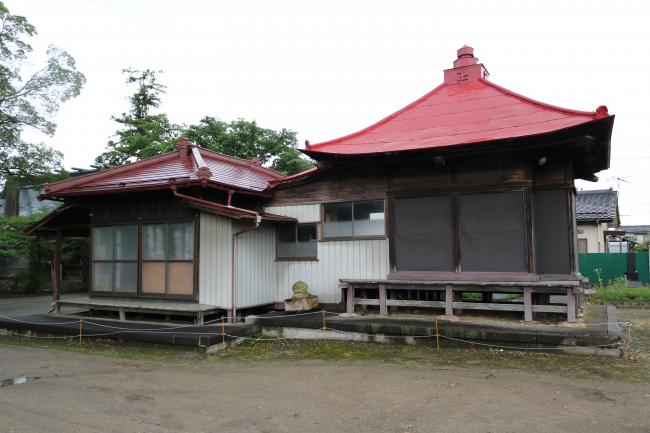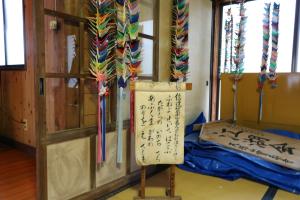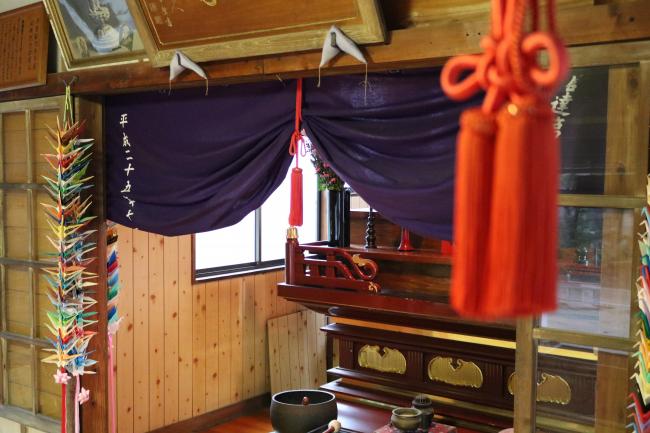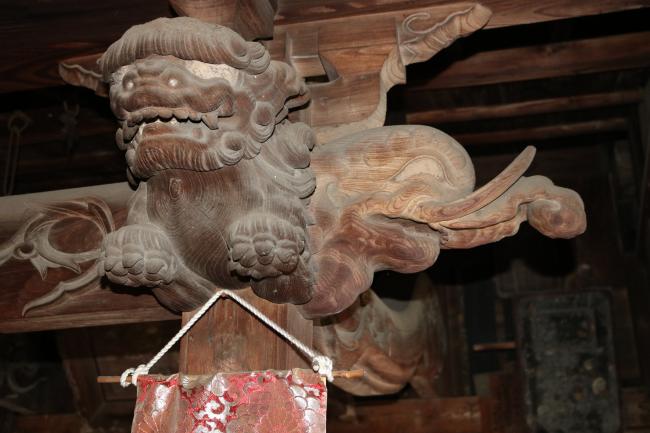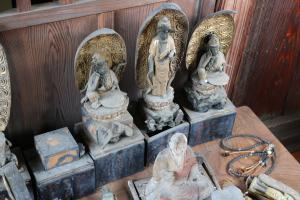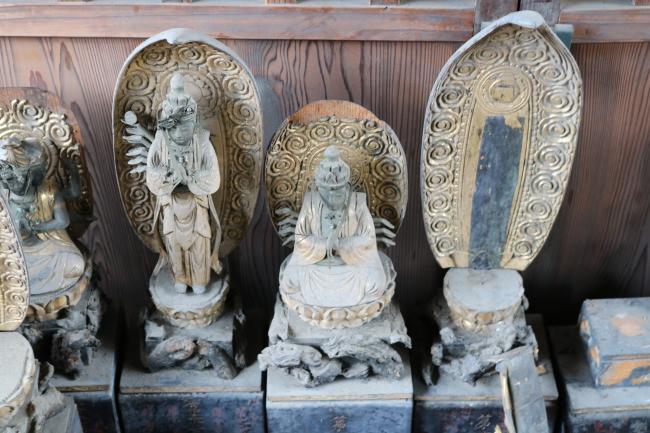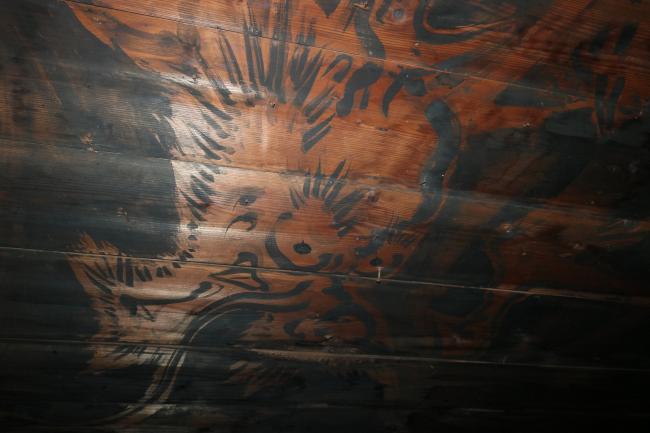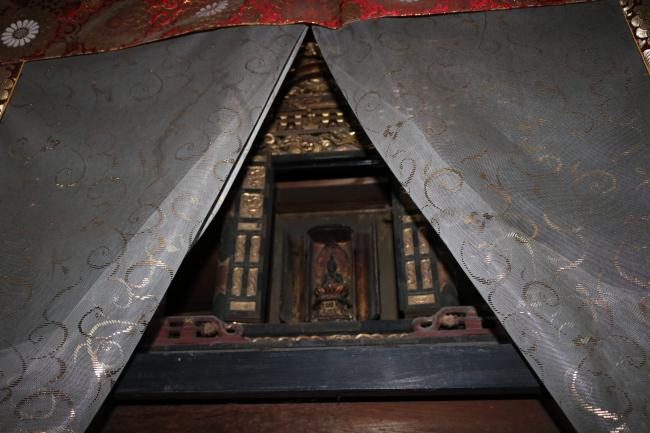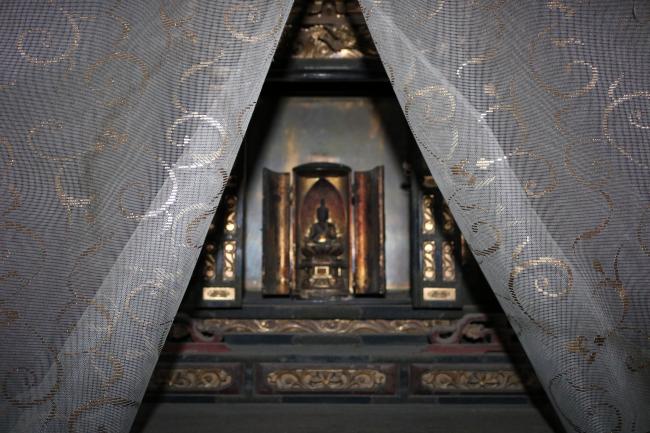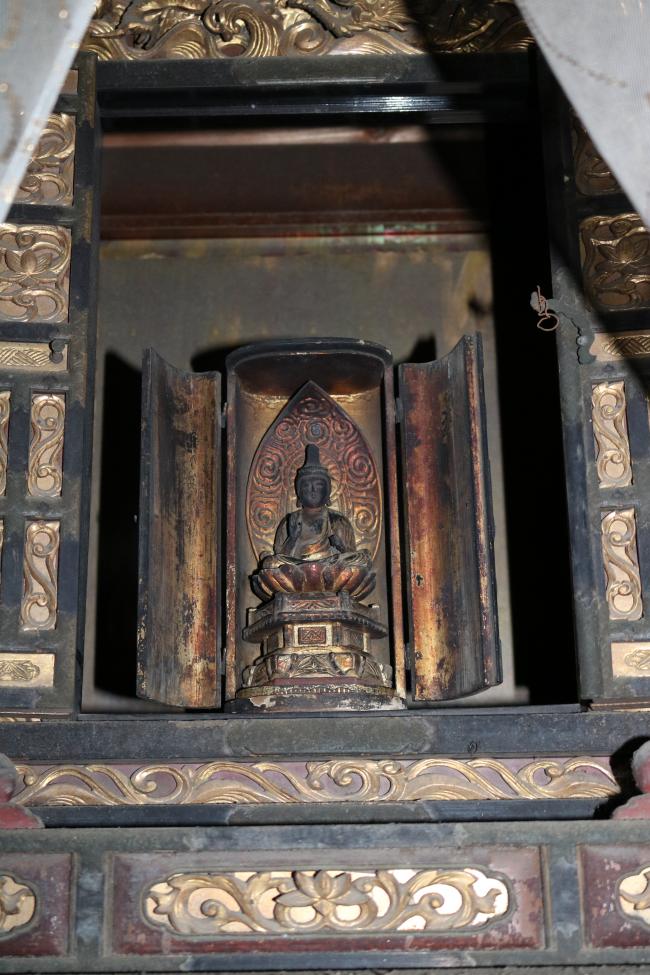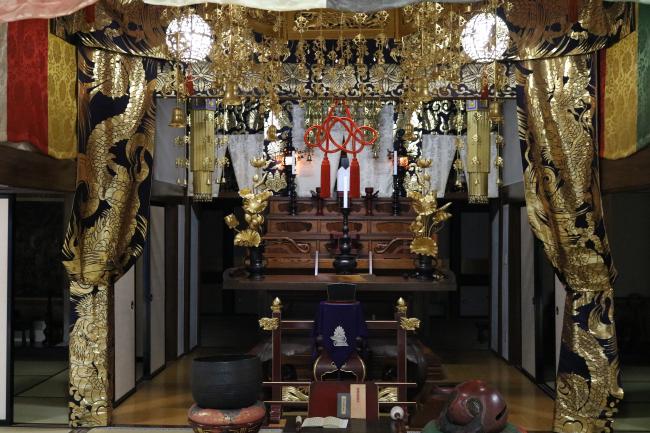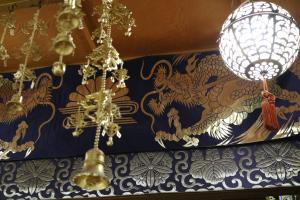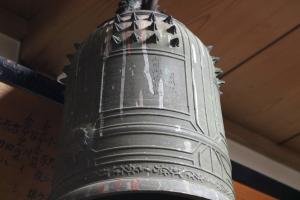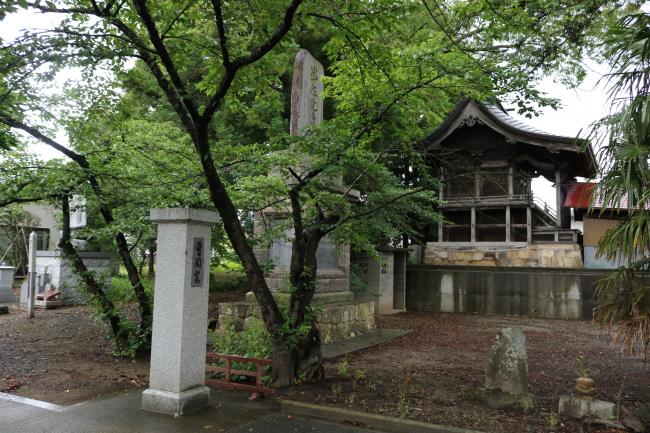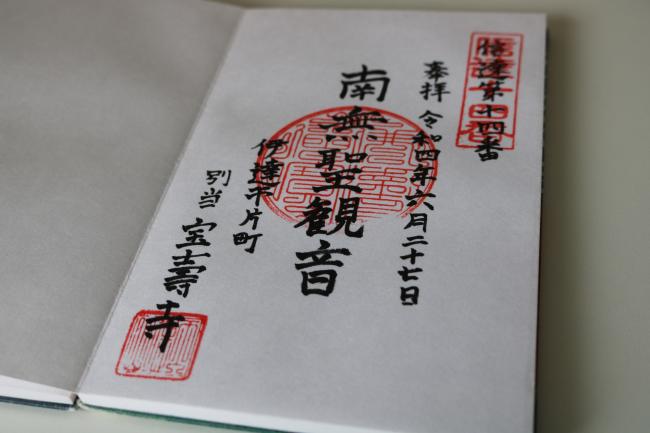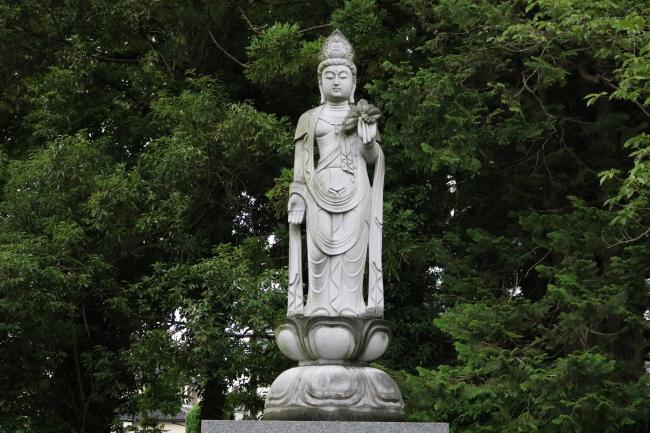本文
June's English Experience ・ 6月の英語体験
June was the third English Experience of the school year.
6月は今年度3回目の英語体験でした。
It was time for me to teach the children about color.
子ども達に色について教える時間でした。
Before that, however, they greeted me eagerly.
しかし、その前に元気に歓迎してもらいました。
The first item on the agenda was singing and dancing the song Head, Shoulders, Knees, and Toes.
その日ははじめに頭・肩・膝・爪先の歌と踊りをしました。
We then played Simon Says, where Simon (known to the children as “Tony-sensei-sama”) instructed them to touch their noses.
その後、「船長さんの命令ゲーム」をして、トニー先生様と呼ばれた船長が「鼻を触って」と命令しました。
(Through their masks, of course.)
(もちろん、マスクの外側から。)
The children have become better and better, to the point where they have come to want a greater challenge.
子ども達はだんだんと上手になってきましたので、少しルールを変えることにしました。
So I offered that they could advance to the next level; though I warned that it would be administered by the strict and short-tempered Oni-sensei.
次のステージに進もうとすると、そこの船長は厳しくて、気短な鬼先生でした。
Under Oni-sensei, all those who make a mistake must sit down.
鬼先生の支配下ならば、失敗したお友達は座らなければなりません。
Forever.
永遠に。
The children contended valiantly with Oni-sensei, but their losses were great.
子ども達は鬼先生と健気に渡り合いましたが、座ってしまった子どもは多かったです。
Finally, only one of their kind was left.
ついに、立っている子どもは一人しかいませんでした。
She was given a choice: let her classmates remain seated for eternity, or have them stand up.
その子は選ぶことができました。お友達を永遠に座らせるか、立たせるか。
To everyone’s great joy, she said “Stand up!”
彼女は「Stand up!」[立って!] と言って、お友達はみんな喜びました。
Truly, this was cause for celebration; a boisterous recitation of If You're Happy and You Know It was in order.
とても嬉しかったので、みんなで楽しく「幸せなら手をたたこう」を歌いました。
Celebrations ended, it was time for serious study.
その後は、真面目な勉強の時間になりました。
With the help of Oni-sensei, I taught the children about the primary colors of red, yellow, and blue.
鬼先生と共に、子ども達に赤・黄・青について教えました。
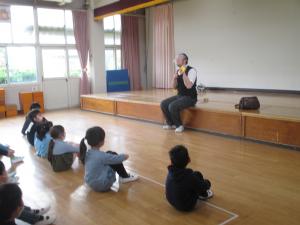
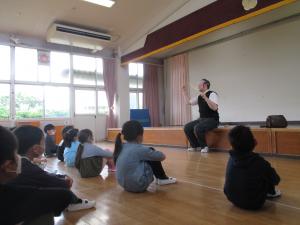
Oni-sensei continued to help when I explained the rules of the upcoming tail-pulling game.
それからの尻尾取りゲームを説明した時も、鬼先生は手伝ってくれました。
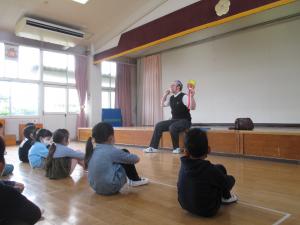
At last, it was time to play.
やっと、遊ぶ時間になりました。
The children were pulling out their hair in excitement, as they lined up for attachment with thin paper tails.
子ども達は細長い紙の尻尾を付けてもらえるのをワクワクして待っていました。
In this game, the children aimed to yank off the tails of their friends, whilst keeping their own attached.
このゲームは、子ども達が自分の尻尾を守りながら、友達の尻尾を取るものでした。
Yet it was not a complete free-for-all; the children were only to pull off tails of whatever color I happened to be calling at the moment.
しかし、ルールはそれだけではありませんでした。子ども達は僕がそのときに言った色の尻尾しか取れませんでした。
Children who had lost their tails were relegated to the sitting section, as were any children caught poaching tails of a closed-season color.
尻尾を失くした子も、言われていない色の尻尾を取ってしまった子も決められた場所で座りました。
Importantly, there were no teams; sharing the same tail color as your friend was no excuse for showing mercy.
このゲームにチームはありません。そのため、同じ色の尻尾を持っていても奪い合うことになります。
It was every child for himself.
自分を守れるのは自分しかいなかったのです。
Eventually, the battle boiled down to a dogfight between two red-tailed children.
最後は、2人の赤い尻尾の子どもが残りました。
The pursuit was fast and furious.
2人の勝負は素早く、激しかったです。
Who emerged victorious?
勝利を収めたのが誰でしょうか?
Your guess is as good as mine.
それは、推測しかできません。
I must admit, I’ve forgotten already.
僕はもう、忘れてしまったからです。
But I didn’t forget to hand out the month’s presents; you can get your copy through the link below.
しかし、その月のプレゼントの配布を忘れませんでした。愛読者の皆さんは下のリンクで確認できます。
Feel free to try your hand at it, while eagerly awaiting the next CIR Update!
次の国際交流員日記を待っている間に、是非やってみてください!
(Posted by: Tony ・ 作成者:トニー)
The Kannon of Hōju Temple ・ 宝寿寺観音
Following an epic journey down the gravel paths of Date City’s far eastern regions to visit the Kannon of Seisui Temple, our next stop along the Shintatsu 33 pilgrimage was across the city, on its far western side.
伊達市東部の清水寺観音までの旅路の後、信達三十三観音の僕たちの次の訪問先は、市の西部にある宝寿寺観音になりました。
The Kannon of Hōjuji (or Hōju Temple) is in the former town of Date, near the intersection of National Routes 4 and 399, a kilometer and a half from the Tohoku Central Expressway’s Date-Koori Interchange, and a 10-minute walk from JR Date Station.
宝寿寺観音は旧伊達町にあり、国道4号と399号の交差点の近く、東北中央高速道路の伊達桑折インターから1.5キロで、JR伊達駅から徒歩10分です。
Which is to say, it is quite easy to reach.
つまり、アクセスが良いです。
Nonetheless, we went on a day punctuated by severe thunderstorms, adding a degree of challenge to our journey.
それにもかかわらず、当日は猛烈な雷の日でしたので、ちょっと大変でした。
This time, we were greeted and guided by the kind Buddhist cleric attached to the temple complex.
今回は、お寺の優しいお坊さんに歓迎いただき、案内をしてもらいました。
We soon found that the Kannon hall is comprised of three chambers.
着いてから、観音堂は三室に分かれていることがわかりました。
We took off our shoes and entered the first.
靴を脱ぎ、第一の部屋に入りました。
It was a wonderland of folded paper cranes and tsurushi-bina dolls, offerings from the dexterous faithful.
器用な信者が作った千羽鶴やつるし雛を飾っている別世界でした。
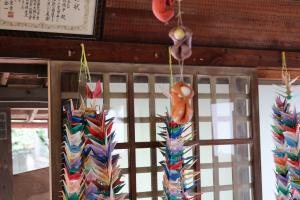
We then entered the central chamber.
次は、真ん中の部屋に入りました。
The second chamber was apparently built around the façade of the original Kannon hall.
真ん中の部屋は本来の観音堂の正面に増設されたそうです。
The anterior awning and exemplary exterior woodwork can be seen just below the ceiling.
正面の元々庇(ひさし)だった部分には素敵な木工細工があります。
Here we also encountered a tableful of Buddhist statues, carefully placed to avoid earthquake damage.
地震の被害を避けるために机の上に並んでいた数多くの仏像も見ました。
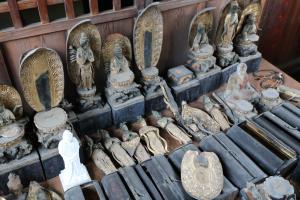
Finally, we entered the dimly-lit rearmost chamber.
最後に、最も奥の薄暗い部屋に入室しました。
It was nearly void of any decoration, but open closer inspection we found a dragon lurking on the ceiling.
飾りはほとんどありませんでしたが、探すと、天井に龍の絵を見つけました。
And resting in an enclosure built into the rear wall, we found the statue of Kannon.
そして奥の壁の囲いの中に、観音様を見つけました。
In the past, this statue was only made visible once every 33 years.
以前まで、この観音様は三十三年に一度しか見ることができませんでした。
Yet to our surprise, on this day the curtain had been drawn, and multiple doors opened.
しかし、この日は幕も囲いの扉も開かれていました。
The statue of Kannon had been revealed to us, without even waiting a single decade.
数十年間待っていなくても、観音様を拝見することが出来ました。
(Apparently, it is now regularly open for viewing by visitors.)
(現在は参拝者の方に公開しているそうです。)
Not only did the kind cleric show us the statue of Kannon, but he also showed us inside the main temple, Hōjuji.
観音様だけではなく、宝寿寺の本堂も優しいお坊さんに見せて頂きました。
The elegant interior reminded me of Nagaoka Kinshūji, another Zen temple we visited in August of 2020 (and which happens to be three minutes away on foot).
立派な内部を見て、近くにある長岡金秀寺(2020年8月の取材)を思い出しました。
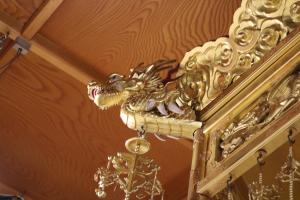
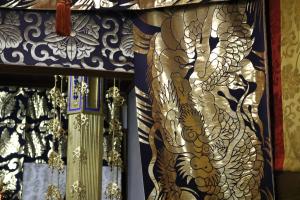
Not only is another Zen temple nearby, but Hōjuji happens to be sandwiched between a notable Shinto shrine to the east, and a Protestant church to the west.
また、近くには別の曹洞宗のお寺があり、隣の敷地にはプロテスタント教会や八雲神社があります。
On this particular trip, I acquired a stamped seal from only the Buddhist temple.
この度、お寺から御朱印を頂きました。
At the end of our visit, I was thankful for the signed seal, for the tour of the temple compound, for being shown the revered Kannon – and for not being hit by lightning!
僕たちの訪問が終わった時、御朱印もお寺ご案内も、観音堂の御開帳もありがたく感じました。そして、雷雨の中、落雷に遭わない事も!
… Which means I will able to continue and visit the remaining Shintatsu 33 sites in Date City.
・・・つまりは、伊達市にある信達三十三観音がこれからも見に行けます。
Please look forward to our next installment!
次回の取材、お楽しみに!
(Posted by: Tony ・ 作成者:トニー)

